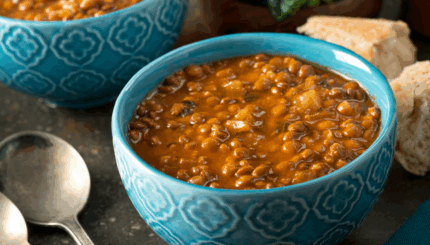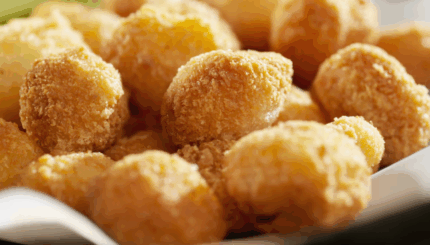Mochi ice cream was born from a marriage of culture, a marriage of flavor — and an actual marriage. While it’s easy to revel in mochi’s creamy and chewy sweetness, its equally complex history might just stretch your mind and stick with you.
Mochi, a traditional Japanese rice cake, has been enjoyed with sweet and savory fillings in Japan for centuries. Traditionally, mochi is made by pounding steamed glutinous rice until it congeals into a sticky, stretchy dough. This labor-intensive process, called mochitsuki, requires strength, rhythm and teamwork reminiscent of a well-coordinated dance. During New Year celebrations, mochi is eaten to symbolize health, happiness and prosperity. First introduced to America in the late 19th century by Japanese immigrants, mochi became a staple in confectionaries across Hawaii and the Pacific Coast, including in downtown Los Angeles’ vibrant Little Tokyo neighborhood. It was here that the sweet rice dough found its cool and creamy match. But before mochi and ice cream got together, a real-life love story would take place.
The daughter of mochi-making masters, Frances Hashimoto was destined to overcome the odds and live a life of sweet success. After her early childhood in Arizona’s Poston War Relocation Center, a Japanese internment camp, during World War II, Hashimoto and her parents returned to their Los Angeles home to rebuild the traditional Japanese confectionery businesses they’d operated since 1910. Hashimoto grew up in nearby Boyle Heights, a culturally-diverse neighborhood and the home of LA’s original Jewish community. After pursuing a career as an elementary school teacher, Hashimoto returned to her roots to continue the family business alongside her Jewish-American husband, Joel Friedman. Together, the pair oversaw Mikawaya’s continued success as a local institution and cultural mainstay for several decades.
But everything changed on a family trip to Japan in the 1980s. Hashimoto introduced Friedman to mochi made the traditional Japanese way — filled and decorated with red bean paste and fruit — but he didn’t really like it that much. This sparked an idea that would redefine mochi for American consumers, as Friedman brainstormed ways to introduce mochi — a foreign delicacy little-known outside the Japanese community — to a broader audience in a way that would be accessible and palatable to the average American. His solution? Stuff mochi, the classic Japanese treat, with ice cream, a quintessentially American dessert. Both he and Hashimoto were thrilled about the concept, but execution proved challenging.
The Nosher celebrates the traditions and recipes that have brought Jews together for centuries. Donate today to keep The Nosher's stories and recipes accessible to all.
Jews have long been ice cream innovators in the United States. Twenty years earlier, another Jewish husband-and-wife duo founded Häagen-Dazs as an ode to Denmark’s loyalty to Jews during World War II and to a love of ice cream that knows no borders. However, the challenge before Friedman and Hashimoto was unique. Due to mochi’s particular texture and chemical makeup, it was difficult to keep the ice cream from melting or the mochi from becoming too hard. To fuse mochi and ice cream, they’d have to hit the temperature sweet spot — a challenge their culinary consultants warned would be to “defy the very laws of physics.” But Jews have a knack for overcoming the odds through hard work and dedication. After a full decade of culinary research and experimentation, Friedman and Hashimoto managed to crack the case by inventing their own style of ice cream uniquely suited to mochi’s needs. With three original flavors — mango, red bean and green tea — it was time to bring their creation to market.
Mikawaya first launched their creation in Hawaii, confident that it would resonate with the high concentration of Japanese Americans. The response was overwhelmingly positive, and from there, it took off — selling out of Mikawaya’s storefront in Little Tokyo and expanding to restaurants and grocery stores nationwide. Mikawaya mochi ice cream even acquired a kosher certification, further bridging cultural divides and ensuring that Jews everywhere could enjoy the unique gastronomical magic of mochi ice cream.
After Hashimoto passed away in 2012, Friedman became the first non-Japanese owner of Mikawaya. He continued making mochi ice cream until 2015, at which point he sold the company to a private equity firm and closed the storefront in favor of the retail market. Today, the treat remains in freezer aisles everywhere, with traditional Japanese flavors sold under the original Mikawaya label and innovative new ones, like guava, dulce de leche and apple pie a la mode mochi ice cream under a new brand name, My/Mochi Ice Cream.
These days, Mikawaya isn’t the only mochi ice cream brand on the market — nor the only one with kosher labels and Jewish roots. Bubbies brand, a Hawaii-born ice cream company named in honor of founder Keith Robbin’s Jewish grandmother, now competes with Mikawaya for shelf space with its own collection of premium, single-serve, and plant-based mochi ice creams. As they say: two Jews, three opinions, 43 flavors of mochi ice cream…
Fusing cultures, textures and tastes, Friedman and Hashimoto stretched the limits of the imagination to introduce America to a new culinary creation. In doing so, they built a growing mochi ice cream industry and fostered cross-cultural connection — following in the footsteps of, and paving the way for, ice cream’s commercial history as a Jewish-rooted product with global reach.



